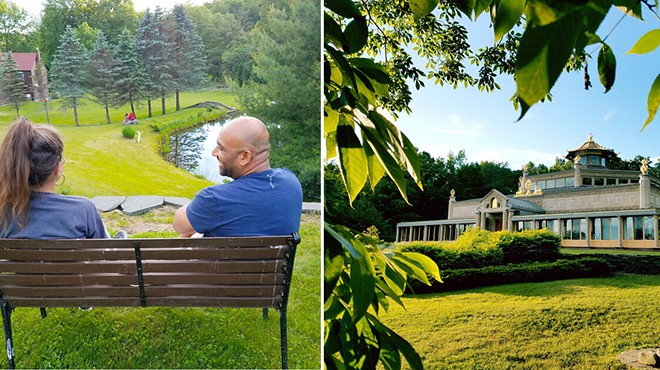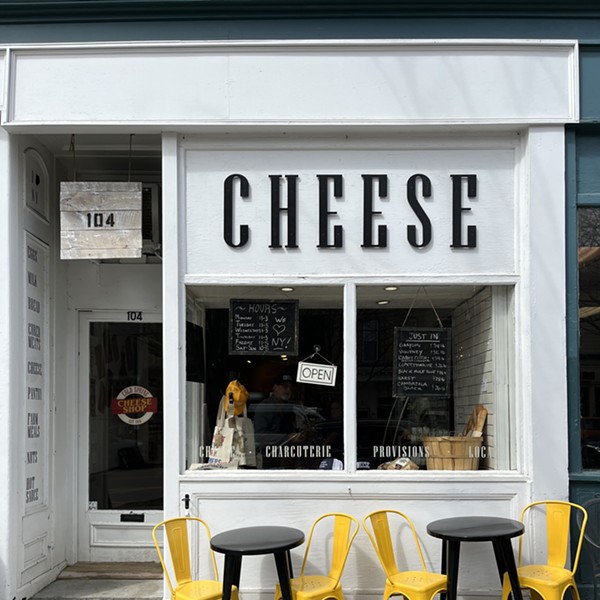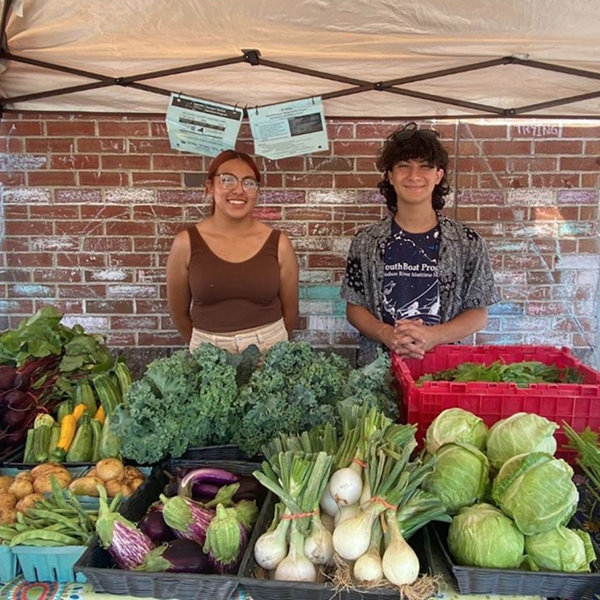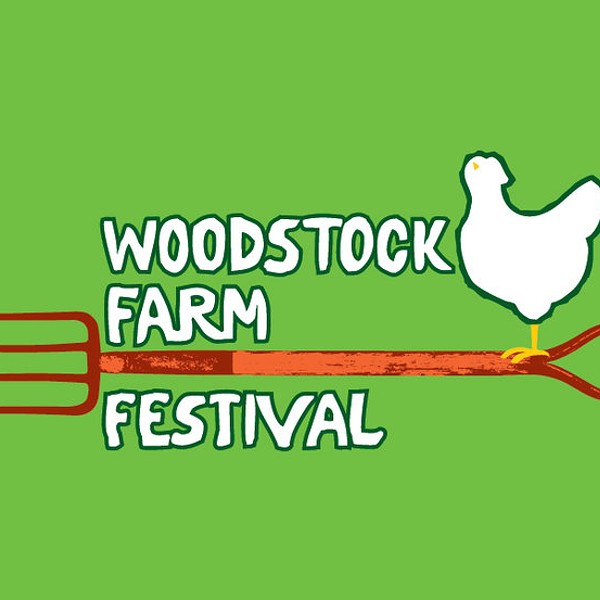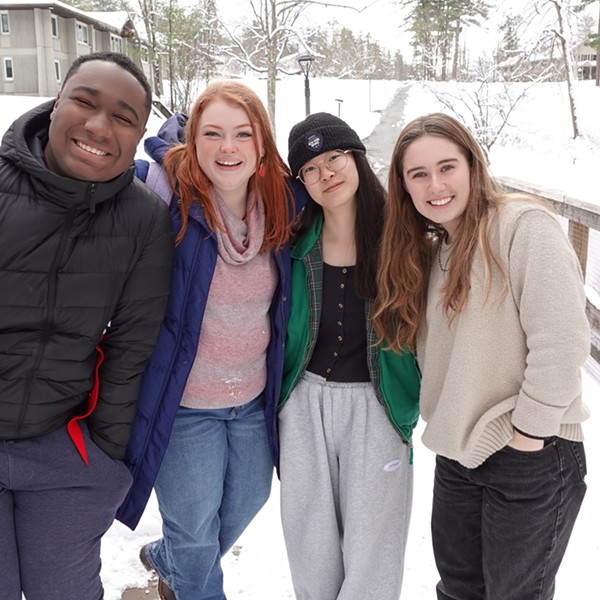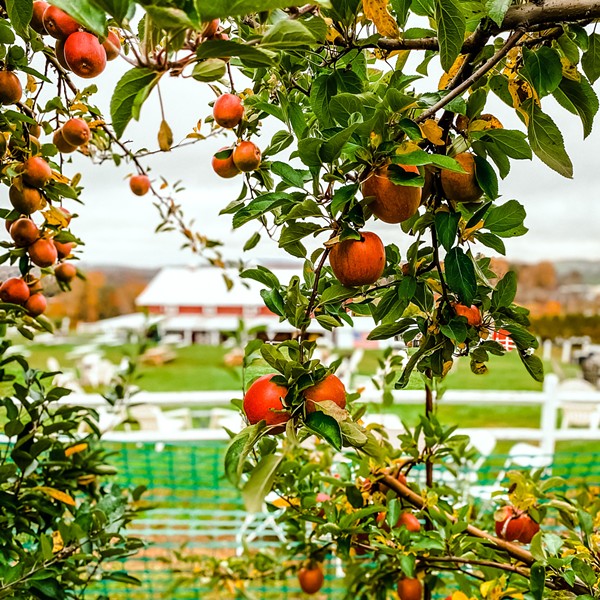Wandering amidst rows of brightly colored flowers, fruit trees, and overflowing boxes of fresh produce, customers are making their selections: an armful of sweet corn, a hanging petunia plant, an extra bag of mulch for the garden. Opened in 1960, at the corner of Route 209 and Cottekill Road in Stone Ridge (“the junction of anywhere and everywhere,” as one customer calls it), Davenport Farms’ Farm Stand and Nursery sits a mile-and-a-half down the road from the hundred acres of farm and where their celebrated sweet corn (and broccoli, and pumpkin, and watermelon, to name just a few others) is grown. Over the years, Bruce Davenport’s place has become a Marbletown standard, and a hub of local activity.
To one side of the building is a simple red picnic table, where families casually take their lunch and relaxing shoppers meet and chat. At any given time, one might also find the principals of the Rondout Valley Growers Association (RVGA) there, discussing the next chapter of their organization’s growth. To get an even fuller picture, however, of the mission, and the depth of purpose, that drives the RVGA forward, a bit more perspective might be of service.
The story begins, give or take, about 25,000 years ago.
At about that time, glacial ice that covered the northern portion of the continent began to melt, forming rivers that carried rock and other primary elements to naturally selected regions; materials that would, one day, produce the kind of ideal soil that is the lifeblood of the New York’s agricultural regions. By 1828, when Maurice and William Wurts’ D&H Canal opened routes and communities in the rich and largely uncharted valley along the Rondout Creek, a new wave of settlers began to find out what Native Americans had discovered many centuries before: This was an extraordinary place to farm. When Davenport, president of the RVGA, states that “producing an ear of corn in the Rondout Valley is like completing a work of art thousands of years in the making,” there is a sense that something more than business-as-usual is happening here.
Buy produce, not land
In 2000, Marbletown residents collected for a “visioning” workshop, its goal to discern the most pressing issues and concerns confronting the township, and how best address them looking forward. “It was immediately clear,” says RVGA board member Susan Krawitz, “that the most important thing to us, and the future of Marbletown, was agricultural preservation.” A Stone Ridge resident and local writer, and an integral part in the growth of the RVGA, Krawitz recalls a time when local farmers were under siege from rising land prices and development pressure. “Farming is not always the most profitable of endeavors,” Krawitz explains. “suddenly, somebody offers you more money than you ever thought you’d have and says: ‘Sell me your land.’ The question was how to make the farming as viable as the selling.”
At that fateful meeting, an unlikely pair formed what was then called the Marbletown Farm Preservation Task Force: Davenport, a lifelong resident of the area and a fourth-generation farmer, and graphic designer Fabia Wargin, a recent transplant. In order to begin organizing the multitude of different farms operating in the area, they began a monthly local newspaper column profiling Marbletown farmers. Using Davenport’s well-known name and reputation as an entrée, Wargin, later with the help of Krawitz, would chronicle the business and farming practices, specialized techniques, and particular challenges of each grower. Writing the articles provided an opportunity to share their vision of presenting a unified effort to raise exposure and awareness, and the grassroots organization began to expand.
In 2003, New York magazine ran a widely publicized cover story touting Ulster County, and surrounding regions, as “the new Hamptons.” Though the real estate bubble was still ballooning, property was plentiful and relatively inexpensive—and the close proximity to New York City, stunning landscape, and comparative anonymity available made places like New Paltz, Stone Ridge, and Woodstock preferred destinations. Celebrities—names like Buscemi, Thurman and Hawke, De Niro, and Bowie—traveled up the New York State Thruway, followed by those who aspired to their lifestyle. Though not as a direct response, that same year, the larger, more inclusive RVGA was born. The inspiration of the Marbletown Farm Preservation Task Force, rising costs, and the increasing threat of having the agricultural land base co-opted by developers and vacation seekers, made the concept of a full community agricultural organization a necessity, and then a reality. Billboards sprang up along Route 209. A website was launched, and the first of the RVGA’s trademark “Farm-to-Table” events was planned. A true Rondout Valley brand identity began to take shape; it’s message: Buy our products, not our land.
“We realized that we needed to get larger, and there was a natural agricultural region, between Ellenville and Kingston, the Shawangunks and the Catskills, that was right there,” says Bruce Davenport. “What we really were trying to do, at first, was get people to make just one more stop, on their way to the supermarket, for fresh food.” The core mission of the RVGA is not much more complex than that, to this day: In order to preserve the land, the farms—and the families whose livelihood depends upon them—must thrive. In pursuit of that accomplishment, regional farmers began to understand that their competition was not one another; rather, it was a lack of exposure and customer awareness, which left commerce in the long-established hands of big business.
“The idea,” comments Christopher Kelder, whose family has lived and farmed in the Rondout Valley for almost 200 years, and who was a founding member of the organization, “was that if people bought locally, and supported their local farms, it would help encourage open space to stay in agriculture.” Kelder’s Farm in Kerhonkson is a telling example of the diversity that the Rondout Valley can boast: More than just a farm stand, customers can pick their own berries, visit the petting zoo, or play a round of miniature golf in the world’s only sustainable, edible course (under the watchful eye of what was, until this past year, the world’s largest garden gnome). “In my opinion,” adds Kelder, a Cornell School of Agriculture graduate, “that is the only way of having agriculture stay in area: to ensure that it is profitable.” The RVGA’s stated goal of being “committed to strengthening the region’s family farms and preserving open space for future generations” has been, and continues to be, the backbone of its purpose. What continues to blossom from those efforts, however, is a consistently widening spectrum of community involvement, service, and consciousness.
Beyond fruits and vegetables
Of course, at the very center, there is the land itself. RVGA Executive Director Susan Perrin, whose experience as a manager, community organizer, and teaching artist is as eclectic as the community she represents, sees a clear duality in the impact of Rondout Valley’s cherished landscapes. “Farms are more than just food,” Perrin asserts. “Farms are open space.” She explains that the land provides an opportunity for community consciousness that is the platform for the outreach and education efforts that have become an essential part of the RVGA. “Besides producing food, besides just beautiful vistas, it kind of provides a mindset that focuses us on where we live, our neighbors, the Earth, and the land around us. It brings you home.” Recent years have seen a welcome shift from land acquisition to preservation, especially in the wake of the collapsing real estate market, revealing a wellspring of conservancy action—and funding—available to be tapped. Creating a more discernible, regional farming collective effort has allowed the RVGA to work in concert with land conservancy organizations like Scenic Hudson, and, most notably, the work of the Open Space Institute (OSI). Since 1964, OSI—in conjunction with its land acquisition affiliate, the Open Space Conservancy—has worked throughout the Northeast to preserve scenic, natural, and historic land.
OSI’s multitiered enterprise in the Hudson Valley includes a committed farm preservation movement, helping to access significant available resources like Purchase of Development Rights grants awarded by the New York State Department of Agriculture and Markets Farmland Protection Program (the state provides up to 75 percent of the funds, with a land conservation organization like OSI funding the remaining portion). OSI has been responsible for the purchase and preservation of hundreds of acres of local farmland, much of which are actively being farmed by RVGA members, and the relationship fostered between the organizations continues to expand. “RVGA is an outstanding educational and local marketing organization,” posits Robert Anderberg, vice president and general counsel for OSI. “In large part they are working on the same goals that OSI is—to preserve productive farmland for future generations.” Once the land is moved through OSI’s process, their conservancy restrictions stipulate that it cannot be subdivided or commercialized. “We’re interested in letting farmers do what they do best—farming,” says Anderberg.
Following a progression outward from the root principles of local sustainability, fresh food, and community, a larger consciousness-raising impact continues to emanate from the RVGA’s core. Perrin and the RVGA have created a corollary nonprofit organization called the Rondout Valley Growers Education Project. Again, the RVGA has partnered with OSI, this time working through their Citizen Action Program, an environmental nonprofit support network. Some of the outreach element has sprung from within the organization, none more significant than the efforts of founding member Fabia Wargin. Her Farm-to-Food-Pantry program works with RVGA growers, and has bloomed in both participation and effectiveness. Volunteer efforts led by Wargin, such as gleaning sweet corn from the larger RVGA corn growers and then freezing them for winter distribution, last year collected a total of over 25,000 pounds, which was given to pantries and soup kitchens throughout the region. “That is really raising consciousness, about local farms, and about community,” Perrin adds enthusiastically.
Accessing, supporting, and ed ucating students is truly the final, limitless frontier for the RVGA, and new member Nicci Cagan exemplifies the success that can be achieved there. Cagan first gained notice when her own grassroots organization, known as From the Ground Up, planted a sustainable garden at Stone Ridge’s Marbletown Elementary School. Her Farm-to-School efforts mirror a larger, national movement for healthier, fresh food in public schools, and fostering environmental awareness in students. She continues to be impactful in the Rondout Valley, partnering with the strength of the RVGA and working with New York Governor’s Mansion Executive Chef and noted whole food activist Noah Sheetz. Recently, Cagan played a key role in hiring a new food service manager, with Farm-to-School experience and training, at Accord’s Rondout Valley Central High School. The RVGA is hopeful that the school will be ready to get more local food into the district, and plans to flash-freeze local produce with the help of Kingston food packaging facility Farm-to-Table Copackers, so that the school would have access to reasonably priced, locally grown food year-round. “This is a prime opportunity to show how it can all work,” Cagan confidently asserts, “to show how we can really feed ourselves.”
So, the RVGA story is still being told, as a self-sustaining loop of family, commerce, and community continues to grow. Besides a day trip through the area—be sure to bring plenty of tote bags for your produce—one of the best ways to connect with the vibrancy and diversity that are the building blocks of the RVGA is through their annual events. RVGA’s 7th annual Orchard Dinner and Wine Tasting takes place on September 11 from 6pm to 9pm at Stone Ridge Orchard on Route 213 in Stone Ridge. The Orchard Dinner celebrates the autumn harvest by featuring RVGA-grown foods prepared by local chefs paired with New York State wines; there’s live music as well as a silent auction. Proceeds help support farmland preservation, local agriculture, and the RVGA’s Farm-to-food-pantry and farm-to-school projects.
For more information on all RVGA’s projects: www.rondoutvalleygrowers.org.









